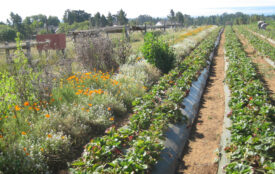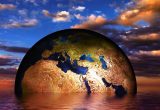The World in 2050: Pathways towards a sustainable future
A new research project, announced today, will develop pathways to achieve sustainable development within a safe and just operating space of a stable planet.
The International Institute for Applied Systems Analysis (IIASA), the Stockholm Resilience Center at Stockholm University, the Earth Institute at Columbia University, the Sustainable Development Solutions Network (SDSN), and the Alpbach-Laxenburg Group announced the launch of a new initiative to develop integrated pathways for achieving sustainable development and attain the Sustainable Development Goals, to be agreed by member states of the United Nations in September 2015.
“The World in 2050” project brings together leading modelling teams to perform an integrated assessment that addresses the full spectrum of sustainable development challenges. Together the participating organizations will establish how the integrated set of goals can be met and compare these sustainable development pathways with a business-as-usual scenario.
This new project was launched as the world gears up for three pivotal summits that will set an international framework for sustainable development: In July, the Financing for Development conference in Addis Ababa will adopt a global development financing framework. In September, the world’s largest gathering of heads of states will convene in New York to adopt new Sustainable Development Goals to be achieved by 2030. And in December, world leaders intend to secure a new climate agreement at the UN climate change conference in Paris.
But after the agreements are made, many questions will remain about how to achieve the new goals. In particular, gaps remain in our understanding of how deep transformations—for example in health, education, agriculture and food security, energy, ecosystem management, population, urban development, and access to basic infrastructure–can be pursued at the required scale, pace, and integration. The necessary investments need to be compared with the costs are of inaction, and we must understand better how to identify trade-offs and exploit the synergies of tackling multiple goals simultaneously. Decision makers also need to better understand how a transformation towards sustainable development will affect prospects in every major region of the world, since such a transformation would not be sustainable if one or more major regions were to suffer major hardship.
The World in 2050 project was launched with a two-day workshop at IIASA in Austria to consolidate the state of knowledge on these difficult questions, with modeling teams from around the world , including international organizations such as the International Monetary Fund, the Organisation for Economic Co-operation and Development, and the International Energy Agency.
The workshop confirmed that outstanding long-term forecasting tools are available across a broad spectrum of sustainable development challenges, but they have yet to be combined into an integrated approach to understanding how the Sustainable Development Goals can be achieved in every major region. This is the gap that will be filled by the World in 2050 project, which is jointly led by IIASA Director General & CEO Professor Dr Pavel Kabat; Stockholm Resilience Centre Director Professor Johan Rockström, and Professor Jeffrey Sachs, Director of Earth Institute at Columbia University.
“Sustainable development calls for robust economic development and a long-term convergence in living standards between rich and poor countries in ways that are socially equitable and respect planetary boundaries,” said Sachs at the launch. “This project will establish how these objectives can be achieved in an integrated manner in every major region of the world.”
Rockström said, “The novelty of the World in 2050 project is both the integration, exploring the feasibility, tradeoffs and synergies of the deep transformations; and the approach of starting from our goal of a future where humanity thrives on a stable resilient planet, and back casting from this point to find different pathways to meet this goal.”
By examining potential co-benefits and interactions between the Sustainable Development Goals, the study will provide policymakers with information to make better decisions.
“Science will be a real partner to policy in this project, not just as a prelude to policy development or a support for decision making, but along the whole chain of policy implementation,” said Kabat. “At a time when the world needs to consolidate financial resources to meet huge interconnected challenges, this groundbreaking project will work with policymakers to identify and implement the most cost-effective decisions to achieve sustainable development and safeguard our planet for generations to come.”

Source
International Institute for Applied Systems Analysis
(IIASA) 2015








